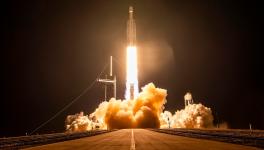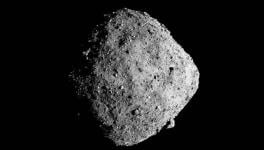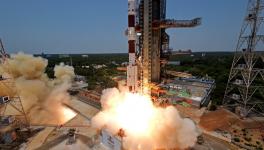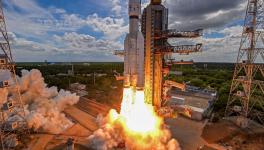US Private Moon Mission: Peregrine Fails to Meet Destination With NASA’s Instruments Onboard
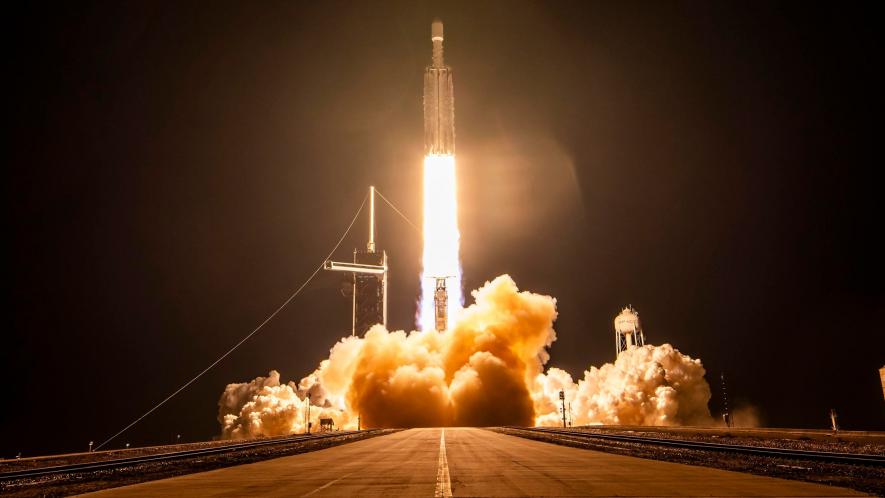
Image Courtesy: Twitter/@SpaceX
What was thought to be opening a new era in lunar exploration meets with technical failure in space. The private commercial moon mission, the spacecraft ‘Peregrine’ was launched from Florida on January 8 with the aim of becoming the first US mission to land on the moon since 1972. On its way, deep in space, the spacecraft began to witness trouble—propellant from the spacecraft leaked, and it went out of control. The company that built and flew Peregrine is Astrobotic, based in Pittsburgh, Pennsylvania, USA and was aiming to land on the moon on February 23.
After the propellant leakage, the engineers tried hard to get the spacecraft into a stable configuration so that sunlight could fall on its solar panel charging the battery. However, the mission is unlikely to achieve its destination.
The leakage of propellant means that maintaining the spacecraft in its desired orientation is very hard. In fact, the thrusters of Peregrine (the part of a spacecraft that maintains its orientation in space) have to work harder than they are designed for. With the failure, the spacecraft cannot remain in its orientation for long, and that causes its failure to land. Peregrine was headed to an area on the moon's surface known as the ‘Sinus Viscositatis’ or the ‘Bay of stickiness’.
National Aeronautics and Space Administration (NASA) has planned a partnership with commercial spacecraft builders through the initiative known as Commercial Lunar Payload Services (CLPS). This collaboration between NASA and the US aerospace industry is aimed at encouraging small businesses that can build and fly lunar landers. In it, NASA is supposed to buy rides for delivering scientific equipment to the moon for conducting various studies there. The Peregrine was the beginning of such a NASA-commercial spacecraft builder’s initiative.
On board Peregrine, there were five payloads (or scientific instruments) of NASA which is worth US$108 million. These included instruments, water, and other volatile substances on the lunar surface. In an article in Nature, Alexandra Witze wrote about NASA having said, “it understands that these commercial missions come with a level of risk, given that they use brand-new equipment from companies that might not have flown space missions before.”
Had Peregrine succeeded in its mission, it would have been the first private lunar mission to touch the moon's surface. Notably, in the history of lunar explorations, the Soviet Union, the United States, China and, lately, India, with its Chandrayan mission, are the only countries that made successful landings on the moon's surface in a controlled way. However, several other countries have attempted the same in recent years. The most prominent reasons for the many failures of lunar landings are the lower gravity on the moon and a much thinner atmosphere on Earth.
Astrobotic, in its initial statement before the launch of Peregrine, indicated that in case of a failure, the company would continue its attempts in future, as its chief executive John Thornton was quoted as saying, If we have a bad day somewhere along the mission, we’re going to be gathering all of the data that we received up to that point, and we’re going to learn from it. We’re going to get smarter, and we’re going to be ready for the next one.”
NASA also seemed to have learnt a lesson from Peregrine’s failure. Its deputy associate administrator, Joel Kearns, at the agency’s headquarters in Washington DC, said, "We will use this lesson to propel our efforts to advance science, exploration, and commercial development of the Moon.” This indicates the first failure by a commercial lunar landing won’t deter NASA from taking up commercial lunar missions in the future.
The next CLPS launch is also not very far; it is scheduled for mid-February. This will involve another company named Intuitive Machines, based in Houston, USA and the spacecraft for it is of a different design. Notably, Astrobotic is also aiming to launch the other CLSP mission with a larger lander having an ice-drilling rover from NASA, and the spacecraft will head towards the lunar south pole, writes Alexandra Witze in the Nature article. But this will happen no earlier than November 2024.
Get the latest reports & analysis with people's perspective on Protests, movements & deep analytical videos, discussions of the current affairs in your Telegram app. Subscribe to NewsClick's Telegram channel & get Real-Time updates on stories, as they get published on our website.









